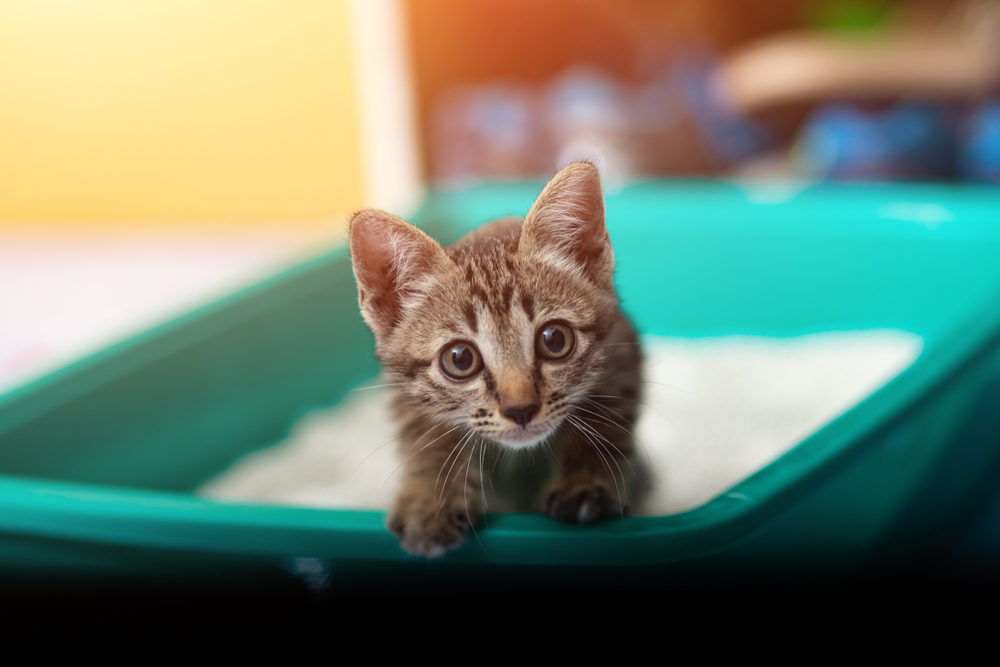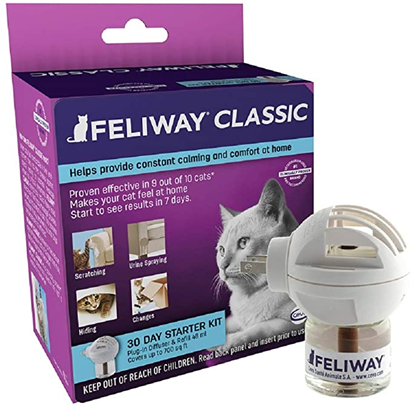
Feline Litter Box Issues
Tuesdays with Tony
While litter boxes aren’t always considered “polite” conversation, they are a very important consideration in your feline guardians’ lives. And really, if you can talk about horse poop (and I hear those conversations all day long) then you can talk about cat poop. Work with me here!
ISO 5 bed/5 bath Cat Condo…
A good rule of thumb (or paw, as it were) is to have one more litter box location than the number of cats in the home. Notice I said location; that means that three litter boxes in the garage right next to each other don’t count! If you have one cat, they should have at least two different rooms they can go in to answer nature’s call. Ideally, litter boxes should be in open areas with multiple exit routes. And litter boxes should be cleaned daily. Maybe you think that’s a lot, but just imagine your only toilet option was one that was only flushed every other day–and imagine you had to stand barefoot in it!
In general, cats prefer large, uncovered, unlined boxes with 2-3 inches of unscented, clumping litter. If your cat doesn’t fall into this preference category, try offering them a “Litter Box Buffet” where you place different combinations of box and litter type all arranged next to each other and let your cat tell you what their preferences are. Avoid putting litter boxes next to loud appliances such as water heaters and dryers, or in dead end areas like linen closets.
Indications of Problems
Oftentimes, the first sign of stress or illness in a normally fastidious feline is “inappropriate” litter box behavior. If you have a cat that starts using other areas of the house instead of the litter box, it’s very important to schedule a veterinary visit to rule out a medical issue before just assuming spite or malice.
If you have a male neutered cat between the ages of 1 and 10, a very important condition to be aware of is feline lower urinary tract disease (FLUTD), also called feline idiopathic cystitis. Cystitis means inflammation of the bladder, and idiopathic means unknown cause. While the important research humans don’t have a definitive cause pinned down, they do know that stress and inadequate water intake are two major players in FLUTD. There is some research to show that cats affected with FLUTD have physiological differences in their stress response.
Cat Stress
Stress can be hard to assess in my feline brethren. We train from a young age to appear unbothered and aloof on the outside, but it is true that we don’t handle change very well as a species (sound familiar?). A change in routine, new people or pets in the home, or unfamiliar environments (even rearranging the furniture) can all lead to stress which will manifest as litter box issues. Hey, it’s not perfect, but it gets your attention!

The best thing you can do for your cats, even before you notice litter box issues, is try to prevent and mitigate stress in the environment. Provide plenty of resources: multiple litter box locations, multiple clean fresh water bowls, scratching posts and other vertical locations, and play.
Another helpful tool is a product called Feliway. Have you ever seen one of your cats rubbing their cheek on a wall, coffee table, or you? Well, it’s not just because scritches feel nice. We have scent glands on our cheeks that release a pheromone that sort of marks things as “safe.” It’s a good way to mark our territory (you should feel quite honored if your cat marks you like that). Feliway is a synthetic version of that pheromone and helps extra-anxious cats feel a little less worried. It is an over-the-counter product and comes in a spray, collar, and room diffuser. The room diffuser works great in the rooms where litter boxes are, and the collar stays with the cat so it helps keep any area feeling safer.

Urethral Blockage
Especially in male cats, FLUTD can progress to a life-threatening condition called urethral blockage, or urinary obstruction. I know humans aren’t as intelligent as cats so I will spell it out very clearly:
If at any time your cat attempts to urinate in the litter box and is unable, they need to go to the emergency vet as soon as possible.
In this condition, the bladder becomes inflamed (remember that cystitis word?) and the inflammation travels down to the urethra. The inflammation and other factors can also lead to the formation of crystals and/or stones. Both of these components can lead to the urethral diameter decreasing to the point of blockage. This prevents the cat from peeing, and when that happens, toxins build up in the body and cause very serious disease.
This is more likely in a male cat because we have longer, narrower urethras compared to female cats. If blockage occurs, your cat must go to an emergency veterinarian and be sedated or anesthetized to have a urinary catheter passed to allow the bladder to empty. He will also likely need at least a day or two of hospitalized care and diagnostics to determine if his kidneys were impacted by the blockage or if he has urinary stones that must be dealt with.
Urinary Stones
The two most common types of stones that we see in the urinary tract are struvite stones and calcium oxalate stones. There are diets that can attempt to dissolve struvite stones, but calcium oxalate stones cannot be dissolved and may need to be removed surgically. These special diets mostly act by acidifying the urine and can also be used to decrease the risk of new stone formation along with increasing water intake.
You Can Lead a Cat to Water
Increasing water intake is an important measure used to prevent stones from recurring. Canned food has a higher water content compared to dry food, plus it tends to be way tastier. Many of us will even allow you to add water to our canned food. Some of us also love a good water fountain, and we absolutely need our bowls kept clean. Our whiskers are quite sensitive, so we prefer they don’t brush the sides of a bowl overly much. Getting wide diameter bowls lets us drink without a sensory overload. If you have a particularly finicky feline, flavoring one of the water bowls with water drained from canned tuna or with a tiny bit of canned food can also encourage water consumption.
I hope I’ve imparted to you the importance of a litter box in your cat’s life. While you may only think about it when you clean it out, we think about it many times a day when we have to use it. Pay attention to your cat’s urinary habits. If you notice a change, it’s because they don’t feel well, and they need to go to the doctor. And if you notice your feline friend completely unable to urinate, it is absolutely vital that they get to an emergency veterinarian, even if it’s a Saturday night and you had plans. After all, what’s more important than your cat? And don’t you dare say your horse…
Until next time,
~ Tony
P.S. Are you subscribed to my blog, or do you rely on Facebook to maybe show you that it’s here? If you aren’t subscribed, all you have to do it scroll down a bit more to the big purple box. Once you’re signed up, you’ll get an email every week with a link to my latest blog. All the very best humans are subscribed. I’m just saying. Scroll down. Purple box. Good human.
Tuesdays with Tony is the official blog of Tony the Clinic Cat at Springhill Equine Veterinary Clinic in Newberry, Florida. If you liked this blog, please subscribe below, and share it with your friends on social media! For more information, please call us at (352) 472-1620, visit our website at SpringhillEquine.com, or follow us on Facebook!
[jetpack_subscription_form title="Subscribe to Whinny's Wisdoms"]

